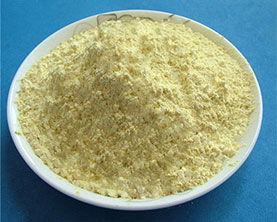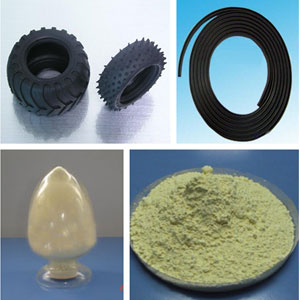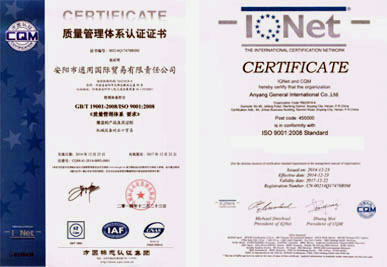Rubber auxiliary M (CAS: 149-30-4) production methods and uses
The chemical name of rubber accelerator M is 2-Mercaptobenzothiazole, referred to as MBT(M). Its CAS No. is 149-30-4. Light yellow monoclinic needle or sheet of crystalline powder, a slight odor and bitter, the relative density of 1.42. Melting point is 170-181 ℃. Soluble in acetone, ethyl acetate, methylene chloride, ethanol, sodium hydroxide, sodium carbonate and other alkaline solution. Slightly soluble in benzene. Insoluble in water and gasoline.
Production method of rubber auxiliary M (CAS: 149-30-4)
Rubber accelerator M (CAS: 149-30-4) has multiple production methods, but mainly three kinds of methods are aniline, o-nitrochlorobenzene and diphenylthiourea as raw materials.
- Aniline as raw material. Aniline, carbon disulfide and sulfur are usually reacted directly in an autoclave, carbon disulfide can also be replaced by fatty amines, dimethyl formamide, trithiazolidine, paraformaldehyde and so on, to make aniline and sulfur react under pressure. The method of using aniline as raw material, the reaction pressure is higher, generally above 4MPa, up to 15MPa, so it is also called high-pressure method.
- O-nitrochlorobenzene as raw material. O-nitrochlorobenzene can be reduced to o-aminothiophenol by reaction with reducing agent sodium bisulfide, sodium polysulfide or hydrogen sulfide. Rubber accelerator M (CAS: 149-30-4) is further prepared with the reaction of carbon disulfide. Some reactions of this method have a longer reaction time (sodium bisulfide is about 20h), but all can be carried out under normal pressure or low pressure, also known as normal pressure method.
- Diphenylthiourea as raw material. The reaction pressure of this method is between the two methods mentioned above, which is below 4MPa, generally called medium pressure method.
- O-nitrochlorobenzene, sodium polysulfide and carbon disulfide as raw materials, reacting to form 2-mercaptobenzothiazole sodium salt at 100-130 ℃ and 343KPa pressure, then acidification with sulphuric acid and water washing, namely finished products.
- Putting a certain proportion of aniline, carbon disulfide and sulfur in the synthesis kettle, heating-up with stirring, the reaction is carried out for 3 hours at a temperature of 240-260 °C and a pressure of 9.0-10.0 MPa. After the reaction end, alkali-dissolve under certain pH conditions, removing insoluble substances, the solution is acidified, dehydrated, and dried to get the product accelerator M. Aniline can also be used as the main raw material, the reaction is carried out under normal temperature and pressure with the yield of 90%.
- Non-pressure process. Sodium sulfide and sulphur are made into sodium polysulfide, then 2-mercaptobenzothiazole sodium salt is synthesized by condensation of sodium polysulfide, o-nitrochlorobenzene and carbon disulfide at 100-130 ℃ and less than 0.34MPa pressure. Acidification with sulphuric acid, water washing, sodium hydroxide alkali dissolve, filtration, two acidification with sulphuric acid, neutralization, water washing, drying and grinding, then namely finished products.
 Uses of rubber auxiliary M (CAS: 149-30-4)
Uses of rubber auxiliary M (CAS: 149-30-4)
Rubber auxiliary M (CAS 149-30-4) is used for natural and synthetic rubber, it can be used alone or with sulphide carbamate, autumn lamb, guanidine, and other alkaline accelerators. It has a rapid promotion of natural rubber and general sulfur thiosulfate rubber, The thiosulfate critical temperature is low, easy to disperse in the rubber, do not pollute. Rubber auxiliary M (CAS: 149-30-4) is mainly used in the manufacture of tires, tapes, rubber shoes and other industrial rubber products. But it can not be used as food materials. In IR, NR, SBR, NBR, HR and EPOM systems, it is a major acid vulcanizing agent with a medium vulcanization speed. With other curing agents such as WIlLLING DM and WIlLLING TMTD and other alkaline curing agent can be used to achieve higher activity.



